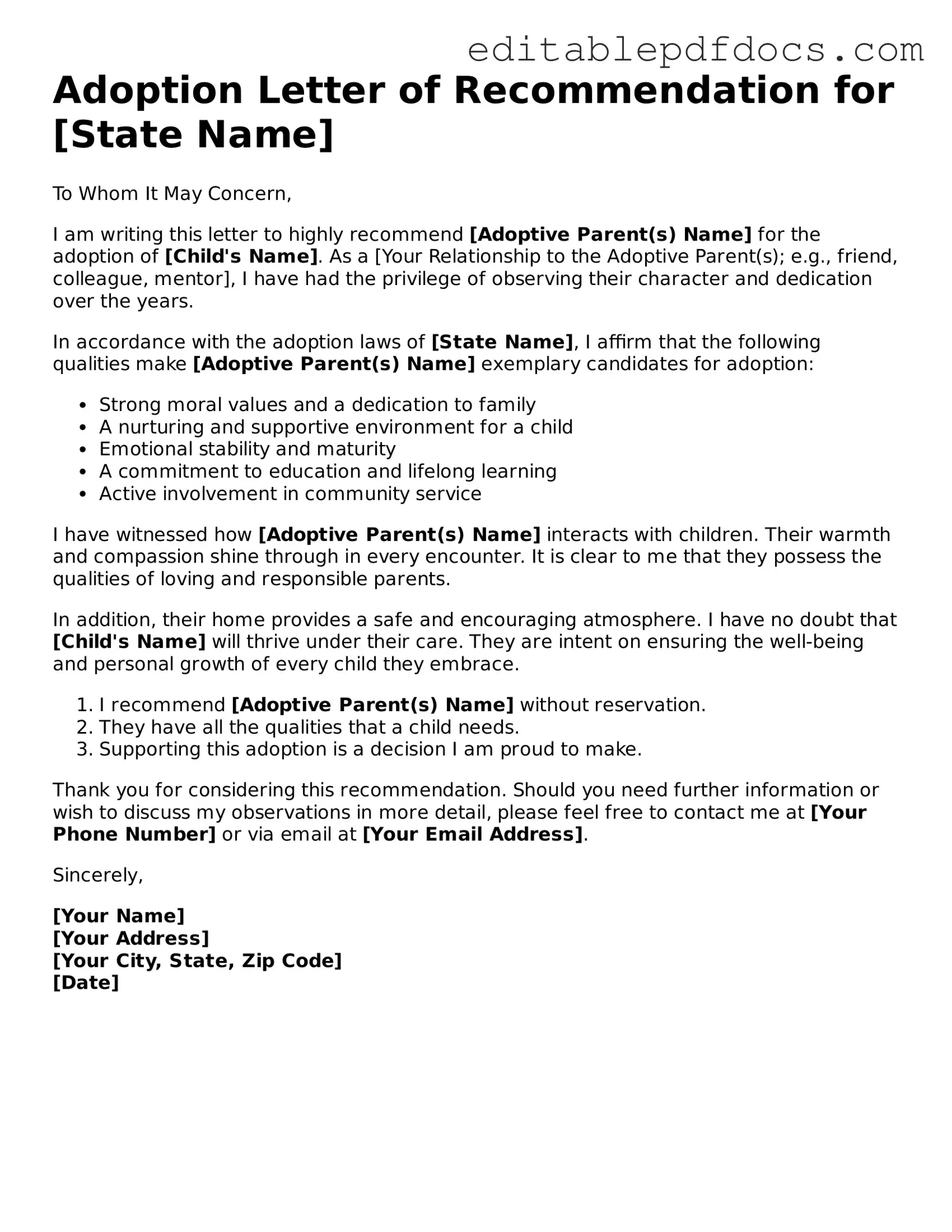Free Adoption Letter of Recommendation Document
The Adoption Letter of Recommendation form is a crucial document that provides insights and endorsements from individuals who can attest to the suitability of prospective adoptive parents. This form serves as a testament to the character, lifestyle, and capabilities of the individuals seeking to adopt. Completing this form accurately is essential for the adoption process, so consider filling it out by clicking the button below.
Open Editor Now
